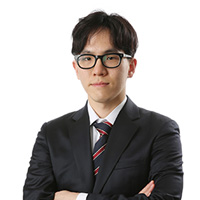[Herald Design Forum 2018] Design’s role much greater, with great responsibilities: Deyan Sudjic
By Shim Woo-hyunPublished : Sept. 5, 2018 - 10:37
For Deyan Sudjic, director of the Design Museum in London, design is a way to understand the world. Among the design luminaries to speak at the Herald Design Forum 2018, to be held Sept. 14-15 in Seoul, Sudjic is noted for his writings about design and architecture that aim to reach the broader public.
“Its too important to leave it only to the specialist,” he said in an email interview with The Korea Herald and The Herald Business, ahead of the forum.
“Its too important to leave it only to the specialist,” he said in an email interview with The Korea Herald and The Herald Business, ahead of the forum.

Under the title of “How Fast Can We Go? The Future of Design,” Sudjic will cover both the benefits and difficulties related to design around the world.
“It is a provocative way to suggest that design is always about trying to change the way that the world works -- sometimes by accident, through unintended consequences and sometimes through deliberate decisions,” Sudjic said.
“Henry Ford built the first mass produced automobiles to make an affordable form of personal transport, he did not intend to create the traffic jam, or the endless suburb. Steve Jobs produced the first iPhone 11 years ago, and even though he was making a remarkably powerful new device, even he could not have predicted that it would make possible Twitter, Uber, and Tinder, which between them have changed everything, how we do politics, how we travel, and how we find partners,” said Sudjic, giving examples of how changes unfold.
Design, in the past, was a measure to provide optimal solutions. “Design was once understood as a scientific method, aimed at providing answers. It was believed that if the design team was careful enough in analyzing the parameters of a problem, they could produce an optimum solution. That problem might be a benign one: How do we produce clean water for a city? Or a more questionable one: How do we sell more cars or washing machines or refrigerators?” said Sudjic.
The meaning of design, however, has been changing.
“There is now a growing number of designers who do not see their role that way. They want to use design to ask questions, as much as to answer them, to explore the consequences of new technologies, or new forms of behavior,” Sudjic said.
“The reality is that the rate of change is only accelerating: After the net comes artificial intelligence; after digital comes bioengineering. We are now facing up to a world which is divided between the enormously wealthy, and the rest, where digital oligarchs seriously pursue the idea of extending human life until they reach 1,000, of holidaying on Mars. We need to do some hard thinking about the consequences of all this,” Sudjic said.
Design is not a tool to offer an ultimate solution. There can always be side effects or unexpected problems that emerge later that consequently demand modifications.
“I think that it is vital to understand that a city is not a work of art, that a city is never finished or completed. The role of design in urbanism is closer to acupuncture than it is to surgery. The most positive interventions are those that do not rule out the possibility of subsequent changes, in spatial configuration, or uses,” Sudjic said.
Sudjic approached the notion of substainability with caution.
“The word sustainable needs to be explored with care. One form of it for designers is a kind of intellectual crutch that takes the place of functionalism, which releases the designer from the responsibility of shaping and imagining, and shifts their role to analyzing. We need to do more work about what is truly sustainable. All electric cars still involve power generation somewhere. The digital revolution on one level abolishes an infinite number of objects, and may even kill off the shopping mall, on the other hand it also involves massive server farms, and the use of precious rare metals for their batteries,” Sudji said.
Deyan Sudjic is the author of numerous publications including “Norman Foster,” “The Edifice Complex,” “The Language of Things” and “The Language of Cities.”
By Shim Woo-hyun (ws@heraldcorp.com)


![[Weekender] AI is silently changing our work: 7 professionals share how](http://res.heraldm.com/phpwas/restmb_idxmake.php?idx=644&simg=/content/image/2024/11/07/20241107050847_0.jpg&u=)






![[What to Watch] Three classic Korean fall films you should watch this month](http://res.heraldm.com/phpwas/restmb_idxmake.php?idx=644&simg=/content/image/2024/11/07/20241107050844_0.jpg&u=)








